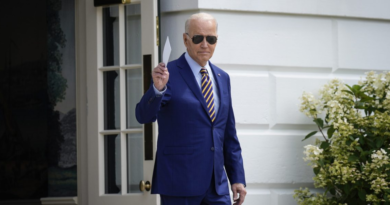A Goldilocks climate at home could protect you from COVID this winter
When lockdown rules were in full effect at the start of the pandemic, little thought was given to how the humidity of the rooms we were locked in affected the transmission of COVID-19.
But new research from MIT now suggests that relative humidity — or the percentage of moisture in the air compared to the maximum water the air can hold at a given temperature — may be an important metric in influencing the transmission of the virus.
Maintaining an indoor relative humidity between 40% and 60% — a Goldilocks climate, not too humid, not too dry — is associated with relatively lower rates of COVID-19 infections and deaths, a study by MIT researchers published by the Journal of the Royal Society Interface found. The researchers also discovered that relative humidity levels outside these conditions were associated with worse COVID-19 outcomes.
This “sweet spot” of humidity, as researchers call it, is outside the barometers of what most people find comfortable, which is around 30% to 50% relative humidity. To put it into context, an airplane cabin is held at around 20% relative humidity.
The study adds another dimension as to why cases of the COVID-19 virus swing upward during the colder months of the year. While COVID cases ebb and flow over the course of the year, studies attempting to pin down the virus’ exact pattern with regard to seasonal outdoor conditions “have yielded mixed results,” MIT scientists say.
How they measured the study
The MIT study measured COVID cases from 121 countries between January 2020 and August 2020 at the start of the pandemic, when vaccines were not yet available.
At the time, the researchers noted that most societies spent more than 90% of their time indoors, where the vast majority of viral transmission took place and climate control systems likely changed indoor humidity.
The researchers measured the number of COVID cases and deaths in countries that had an outbreak during this time, while factoring out variables like isolation, quarantine, and testing measures. They then measured meteorological data and indoor relative humidity by comparing the outside temperature with the likelihood people would turn on a climate control system when temperatures dropped outside the typical human comfort range of 66°F to 77°F.
They found that whenever a region saw a significant rise in COVID-19 cases and deaths, the estimated indoor relative humidity in that region had swung outside the bounds of 40% and 60%. Nearly all regions in the study experienced fewer COVID cases and deaths when they were in the humidity “sweet spot” during warmer times, suggesting a strong correlation between regional outbreaks and indoor relative humidity.
“There’s potentially a protective effect of this intermediate indoor relative humidity,” says lead author of the study Connor Verheyen, a Ph.D. student in medical engineering and medical physics in the Harvard-MIT Program.
In more region-focused data, Verheyen and other researchers found that when the indoor relative humidity for countries in the Northern and Southern Hemispheres dropped below 40% in their colder months, COVID-19 cases and deaths also spiked in these regions. For countries in the tropics where the relative humidity would increase during the region’s summer season, there was also a gradual rise in COVID-19 deaths during this period.
“Indoor ventilation is still critical,” says another study co-author Lydia Bourouiba, who is director of the MIT Fluid Dynamics of Disease Transmission Laboratory. But she notes “we find that maintaining an indoor relative humidity in that sweet spot — of 40 to 60 percent — is associated with reduced COVID-19 cases and deaths.”
The researchers say their next step is measuring how indoor relative humidity affects COVID-19 outcomes and finding if pathogens survive longer in respiratory droplets in very dry or very humid conditions.
White House Chief Medical Advisor Anthony Fauci said last week on the Conversations on Health Care radio show that the U.S. was coming to a difficult COVID crossroad as the cold winter months approach and immune evasive variants of Omicron emerge.
Our new weekly Impact Report newsletter will examine how ESG news and trends are shaping the roles and responsibilities of today’s executives—and how they can best navigate those challenges. Subscribe here.



